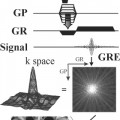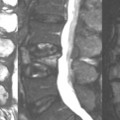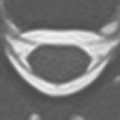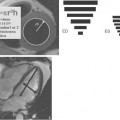6 Multichannel Coil Technology: Body Imaging
A major motivation for the introduction of surface coils in the mid-1980s was the improvement in signal-to-noise ratio, resulting from a combination of increased coil sensitivity and, to a lesser extent, reduced noise. A limited volume, unfortunately, also implied limited anatomic coverage. To compensate for this, combined surface coils or phased array coils were introduced. Further extension of this concept led to the development of multichannel coil technology.
Illustrated in Fig. 6.1 is an axial scan of the liver acquired using a 12-element coil. The coil itself is composed of two rings of six elements, similar in concept to the 12-channel head coil illustrated in Fig. 5.2 (p. 11), but designed for abdominal imaging and flexible in nature. Each of the six surface coils (from one ring of elements) acquires signal from the anatomic region adjacent to the coil, with low sensitivity for noise outside the coil profile. The combined image takes advantage of the high signal provided by each individual coil, the latter due to the close proximity to adjacent tissue. Arrayed around the periphery in Fig. 6.1
Stay updated, free articles. Join our Telegram channel

Full access? Get Clinical Tree








